3 Ways To Treat Hyperpigmentation And Tips To Prevent It
Find out the easiest and most effective ways to treat your skin discoloration.

Image: Shutterstock
Hyperpigmentation is a harmless condition characterized by uneven patches on the skin. This condition is caused due to excess melanin (a pigment responsible for skin color) production. But how to treat hyperpigmentation? This article explores everything you need to know about hyperpigmentation, the treatment options available, and the ways you can prevent it. Keep reading to know more.
In This Article
What Is Hyperpigmentation? Why Do You Get It?
Hyperpigmentation is the discoloration of the skin, resulting in the development of dark patches or spots.
The affected area appears darker than the rest of the skin. This gets worse with sun exposure. Hyperpigmentation is a broad term. Skin discoloration caused by acne blemishes, freckles that have turned into sunspots, age spots, or darkening of the skin due to conditions like psoriasis and eczema all come under hyperpigmentation.
All these skin issues boost the production of melanocytes (cells that form melanin), and this, in turn, increases melanin production on your skin, resulting in an uneven skin tone. The excessive melanin gets dumped into the deeper levels of your skin, causing hyperpigmentation. These spots, when further exposed to sunlight, flare up and worsen.
Hyperpigmentation may develop due to several reasons and has specific signs and symptoms. Let’s take a look at them.
Key Takeaways
- Hyperpigmentation or dark patches is categorized into three types — melasma, post-inflammatory hyperpigmentation (PIH), and sunspots.
- Melasma commonly occurs among women and is difficult to treat. Genes, excess sun exposure, and use of contraceptives are a few likely causes.
- While PIH is common among those with darker skin tones, sunspots are seen mostly among those with light or medium skin tones.
Hyperpigmentation: Causes, Types, And Signs To Look For
Hyperpigmentation is divided into three main types, depending on the causes:
1. Melasma
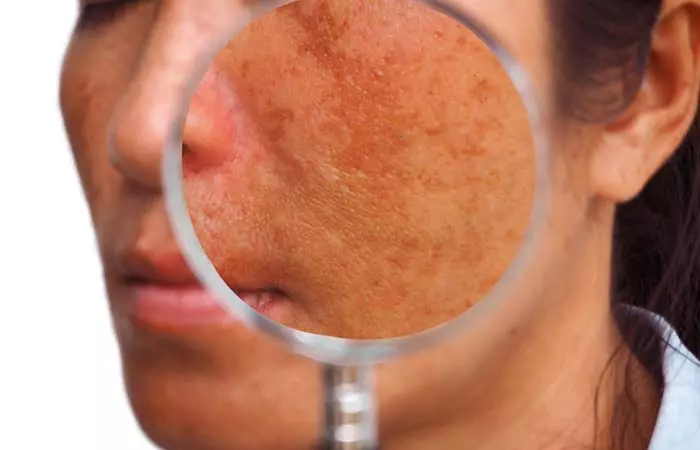
This is a type of hyperpigmentation that is very common in women, especially those with darker skin tones. This skin discoloration usually occurs on different parts of your face like the forehead, nose, cheeks, or just above the lips. And that’s why melasma is a bit difficult to treat. Your body experiences hormonal shifts during pregnancy or when you take oral contraceptives or during hormonal therapies, and this increases when you go out in the sun. Sometimes, it goes away when the hormones are back to normal.
Signs And Symptoms
- Brown patches on the skin
- Typically occurs on the face
- Patches are generally symmetrical
- Patches usually appear on the forehead, chin, cheeks, and bridge of the nose
- May also appear on the forearms and neck
Diagnosing Melasma
The doctor usually conducts:
- A visual examination
- Wood’s lamp examination, where the doctor holds a special light against your skin and checks for bacterial or fungal infection to determine how many layers of skin are affected by melasma.
- A biopsyi A process where a sample of cells, tissues, or fluids is extracted from the body to be examined in a lab. in case of severe melasma
What Are The Risk Factors Involved?
The exact cause of this condition is yet unknown. However, several factors may put you at the risk of melasma. They include:
- Your genes. A study found that at least 40% of the patients had a relative who had melasma (1).
- Excessive exposure to UV rays can cause melasma in people with darker skin tones (2).
- Anxiety traits and using anxiolytic drugsi A group of medications used to treat or prevent anxiety disorders or symptoms. and antidepressants also increase your risk (3).
- Apart from pregnant women and those using contraceptives, post-menopausali The period of time following menopause, which is when a person’s menstrual periods come to an end. women who receive progesteronei A hormone mainly secreted in the ovaries that is crucial for pregnancy, menstruation, and sperm production. during hormone therapy are also prone to facial melasma (4).
2. Post- Inflammatory Hyperpigmentation (PIH)
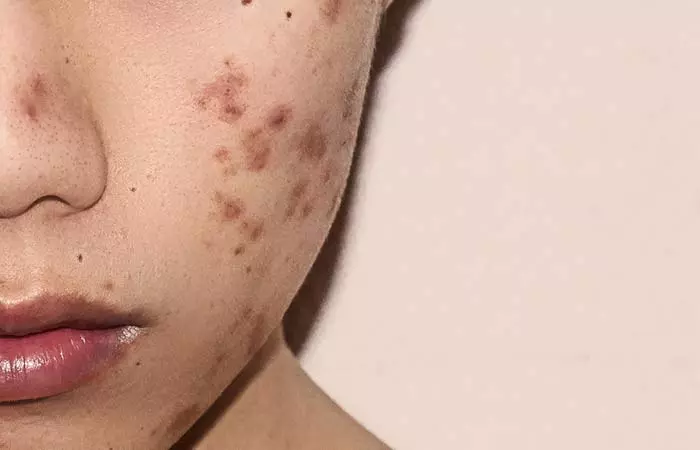
This is a condition that results from trauma or skin inflammation such as psoriasis, eczema, and severe acne. These skin conditions increase the production of pigments, causing dark spots. This type of hyperpigmentation can affect people of any skin type, but it is prevalent in those with darker skin tones.
Signs And Symptoms
- The pigmented patches usually appear on the area where the skin inflammation occurred.
- The pigments appear after the inflammation or injury is healed.
- The lesions are usually black or light brown.
- When exposed to sunlight, the patches grow darker.
Diagnosing PIH
The skin care specialist diagnoses PIH by:
- Carefully reviewing your medical history
- Conducting skin examinations
- Doing a biopsy of the patch
What Are The Risk Factors Involved?
Your risk of developing PIH increases if:
- You have a darker skin tone (5), (6).
- You have any skin condition, such as trauma/accident, eczema, psoriasis, and acne.
- You have excessive exposure to UV rays.
3. Sun Damage Or Sunspots

Excessive exposure to sun rays is the most common reason people develop hyperpigmentation. When it happens with advanced age due to lifetime sun exposure or increased melanin production, we call them age spots. But if you have developed hyperpigmentation in your early 30s, remember that the process had already begun when you were in your teens.
Sunspots are usually light brown (generally called freckles) and appear mostly on the face, neck, chest, and hands, which are primarily exposed to UV rays. People who have light to medium skin tones develop freckles, and they get darker with continuous sun exposure.
Diagnosing Sunspots
Visual examination of the skin is enough for diagnosing sunspots. However, some sunspots may be a sign of skin cancer (melanoma). In that case, a skincare specialist may conduct several other tests. Primarily, they follow the ABCDE guideline:
- A – for detecting Asymmetry
- B – for checking the Border (is it spreading or is notched)
- C – for the Color
- D – the Diameter of the spot
- E – is it Evolving or not?
What Are The Risk Factors Involved?
- Excessive sun exposure
- Not using sun protection may increase your risk.
- Your skin tone. Sunspots are most common in people who have light or medium skin tones.
Don’t worry, most hyperpigmentation responds well to treatment. Since this is one of the most prevalent skin conditions in women, continuous research is going on, and experts are coming up with newer forms of treatment to eliminate these ugly spots. From brightening agents to facial procedures, here are some of the most popular pigmentation treatment options for tackling hyperpigmentation.
How To Treat Hyperpigmentation
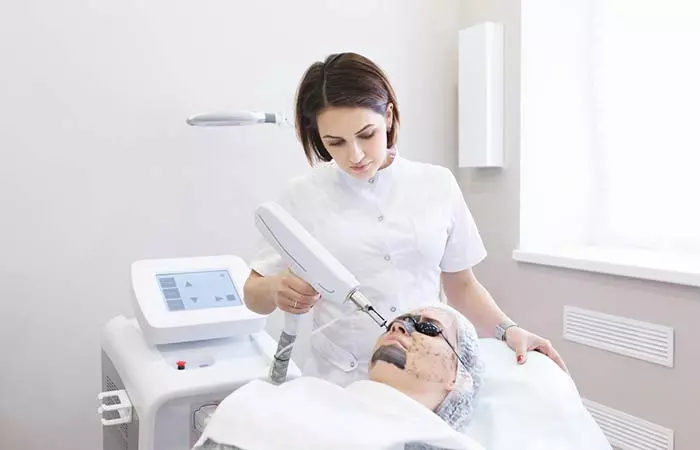
1. Topical Medicine
The dermatologist often suggests topical medicines and chemical ingredients to lighten the spots, such as:
- Hydroquinone (2%)
This is very effective in reducing hyperpigmentation (especially helpful in melasma) and prevents further discoloration (7). Usually, doctors prescribe skin ointments containing 2% hydroquinone. However, this medicine is not to be used by pregnant women.
- Chemical Peels
Even in clinical trials, chemical peels have shown promising results in treating hyperpigmentation.
Of all the chemical peels, glycolic peels are the safest and most effective in eliminating spots. Even salicylic acid and lactic acid peels work well in treating hyperpigmentation (8)
- Retinoic Acid (Tretinoin)
Both tretinoin creams and peels act on the dark spots in a similar way. Both disperse the melanin pigments and lighten the spots, acting as a natural skin lightening agent (8).
- Kojic Acid
This bleaching agent is nontoxic (kojic acid derived from palm oil) and gives extremely satisfactory results when it comes to lightening dark spots and preventing further discoloration caused by excess melanin production (9).
 Did You Know?
Did You Know?- Dimethylmethoxy Chromanyl Palmitate
This brightening agent is widely used for treating pigmentation and is a safe and effective option for treating pigmentation (10).
2. Other Treatment Options
There are several facial procedures that the dermatologist can perform on your skin to treat hyperpigmentation. Depending on the severity of your spots, you may need multiple sessions. The most common procedures are:
- Microdermabrasion
This is a procedure in which the topmost layer of your skin is removed (exfoliate and suction them off) by using a device. You will need multiple sessions to get the desired results.
- Laser Treatment
Also known as laser resurfacing treatment, this procedure uses light beams to remove or peel your skin surface. Laser treatment can be ablative (uses an intense laser to remove skin layers) or non-ablative (boosts collagen development and tightens the skin). Ablative lasers are a bit strong and may cause side effects. Talk to your doctor/dermatologist before considering laser treatment because the type of laser suitable for your skin depends on your skin type and the degree of discoloration.
Zoe, a DIY, beauty, and lifestyle blogger, shares her experience of trying the Broadband Light (BBL) and CO2 fractional laser treatments for her hyperpigmentation issues. She notes her observations after the BBL treatment, saying, “After just 1 session of the BBL, the hyperpigmentation on my cheeks has mostly faded, and my skin tone has become brighter. My skin is also smoother and has a youthful shine to it (i).”
 Quick Tip
Quick Tip3. Over-The-Counter Treatments
OTC creams are available to help lighten your pigmentation. However, some creams are a bit stronger, and you will need a doctor’s prescription to get them. But most other creams are usually mild and will not need any prescription. These come in gel or cream form and should be applied on the marks once or twice daily (or as suggested by the doctor or the manufacturer) for noticeable results. The most common OTC creams/gels include:
- Niacinamide or vitamin B3
- Licorice extracts
- N-acetylglucosamine
- Hydroquinone (up to 2%)
You will get these creams easily, and these are affordable as compared to other professional treatments. However, remember that these work extremely slowly, and results may take longer to show up than other treatment options.
Prevention is better than cure – we know you’ve heard this since childhood, but this adage is true in this case. Pigmentation starts early from the deepest layers of your skin and will not show up until it worsens. Here is what you can do to prevent it.
Ways To Prevent Hyperpigmentation
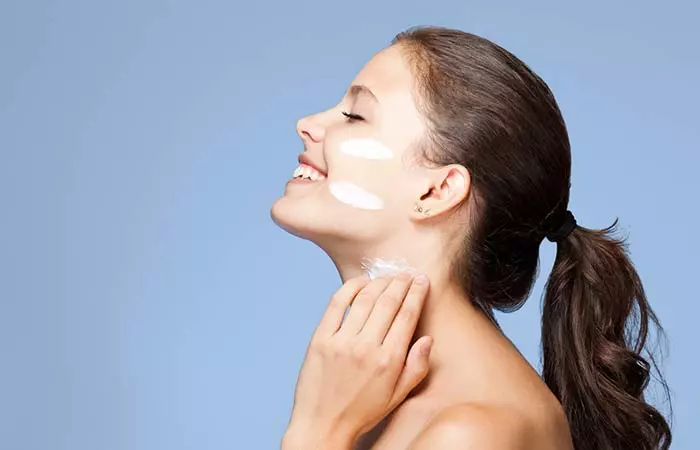
- Never Ever Forget Your Sunscreen
Always use one that has the highest SPF and offers both UVA and UVB protection. Use it every day before going out into the sun and apply on all exposed parts. Reapply sunscreen after every 2-3 hours.
- Try To Avoid The Sun
You have hats (preferably broad brim hats), scarves, umbrellas, and sunglasses – wear them to prevent the sun rays from hitting your skin. Stay in the shade when the sun is the strongest (whenever possible).
- Follow A Good Skin Care Routine
This helps your skin heal the abuse it goes through every day (like pollution and other environmental factors). Also, if you have an inflammatory condition (such as acne or eczema), use anti-inflammatory skin care agents regularly. Most of the times, these conditions initiate pigmentation, which gets worse if not dealt with properly.
- Use Antioxidants
Add antioxidants to your daily skincare routine to shield skin from damage and lower the chance of dark spots. Antioxidants provide an extra layer of protection, helping keep pigmentation at bay.
- Add Vitamin C For Brighter Skin Tone
Including a vitamin C serum in your skincare can enhance skin brightness and even out the skin tone. Vitamin C is effective in reducing dark spots and skin dullness.
Once you have a breakout and it heals, you should immediately follow it up by using brightening agents. Remember, “a stitch in time saves nine,” so you need to act fast. You never know when a seemingly harmless acne spot or pimple mark may flare up and worsen.
If you are battling hyperpigmentation, consult a dermatologist to figure out the extent of your condition and the treatment method that will work best for you. We hope the information provided in the article has helped you gain a better understanding about hyperpigmentation.
Infographic: Top 6 Ways To Treat Hyperpigmentation
The persistent dark patches and uneven skin tones from hyperpigmentation can undermine your self-esteem and dull your glow. Don’t worry. All you need is an excellent and effective treatment method to help you fight this widespread skin issue. Check out the infographic below to learn more about the various techniques that doctors employ to treat hyperpigmentation.

Illustration: StyleCraze Design Team
Hyperpigmentation is a harmless skin condition that causes discoloration of the skin. It is of three main types: melasma, post-inflammatory hyperpigmentation, and sunspots or sun damage. It can be treated with topical medicine, over-the-counter treatments, and chemical peels. However, you can prevent this skin condition by avoiding excessive exposure to the sun, using sunscreen diligently, following a good skin care routine, and even trying the above-mentioned hyperpigmentation remedies. If you have hyperpigmentation, consult a dermatologist to figure out the cause behind it and the treatment options available that will work best for you.
Frequently Asked Questions
Does vitamin C help with hyperpigmentation?
Yes, vitamin C can help reduce hyperpigmentation (11).
Is vitamin E good for hyperpigmentation?
Yes, using vitamin E helps reduce hyperpigmentation (12).
Does turmeric help hyperpigmentation?
Yes, turmeric is one of the best solutions for reducing hyperpigmentation and fighting the signs of aging (13). Home remedies for skin pigmentation, like turmeric, are safe and naturally lighten dark spots to improve your complexion.
Illustration: Ways To Treat Hyperpigmentation And Tips To Prevent It
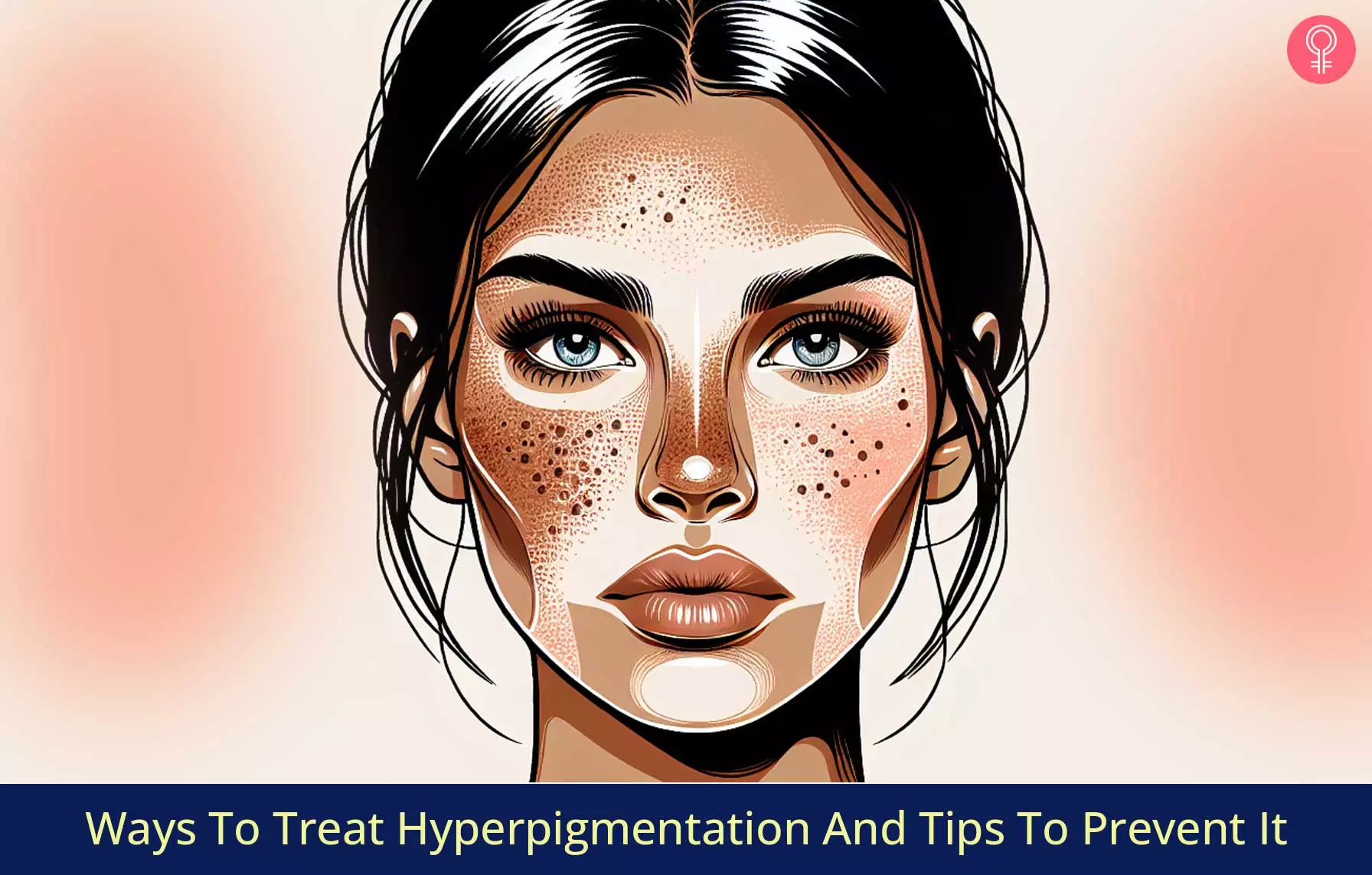
Image: Dall·E/StyleCraze Design Team
Hyperpigmentation is a common skin condition that causes dark patches on the skin. Check out the video given below to know what it is and how to treat it.
Personal Experience: Source
StyleCraze's articles are interwoven with authentic personal narratives that provide depth and resonance to our content. Below are the sources of the personal accounts referenced in this article.
i. Adult Acne and Hyperpigmentation!! Review and Results of BBL and CO2 Fractional Laserhttps://mypeaceofheaven.wordpress.com/2018/12/10/adult-acne-and-hyperpigmentation-review-and-results-of-bbl-and-co2-fractional-laser/
References
Articles on StyleCraze are backed by verified information from peer-reviewed and academic research papers, reputed organizations, research institutions, and medical associations to ensure accuracy and relevance. Read our editorial policy to learn more.
- “Melasma: a clinical and epidemiological review”, Anais Brasileiros de Dermatologia, NCBI
- “Aggravating factors for melasma..”, Journal of The European Academy of Dermatology and Venereology, NCBI
- “Risk Factor of Facial Melasma..”, The British Journal of Dermatology, NCBI
- “Epidemiology of Melasma..”, International Journal of Dermatology, NCBI
- “Incidence of Common..” Cutis, NCBI
- “Postinflammatory Hyperpigmentation..”, The Journal of Clinical and Aesthetic Dermatology, NCBI
- “Hyperpigmentation Therapy: A Review”, The Journal of Clinical and Aesthetic Dermatology, NCBI
- “Chemical Peels..”, Journal of Cutaneous and Aesthetic Surgery, NCBI
- “Depigmenting Effect..”, Journal of Biomedicine and Biotechnology, NCBI
- “Development of a New..”, International Journal of Cosmetic Science, Wiley Online Library
- The effect of Vitamin C on melanin pigmentation – A systematic review
https://pubmed.ncbi.nlm.nih.gov/33456250/ - Effects of topical and oral vitamin E on pigmentation and skin cancer induced by ultraviolet irradiation in Skh:2 hairless mice
https://pubmed.ncbi.nlm.nih.gov/11341050/ - Are Natural Ingredients Effective in the Management of Hyperpigmentation? A Systematic Review
https://www.ncbi.nlm.nih.gov/pmc/articles/PMC5843359/
Read full bio of Dr. M. Khawar Nazir
Read full bio of Ramona Sinha
Read full bio of Eshna Das
Read full bio of Krati Darak







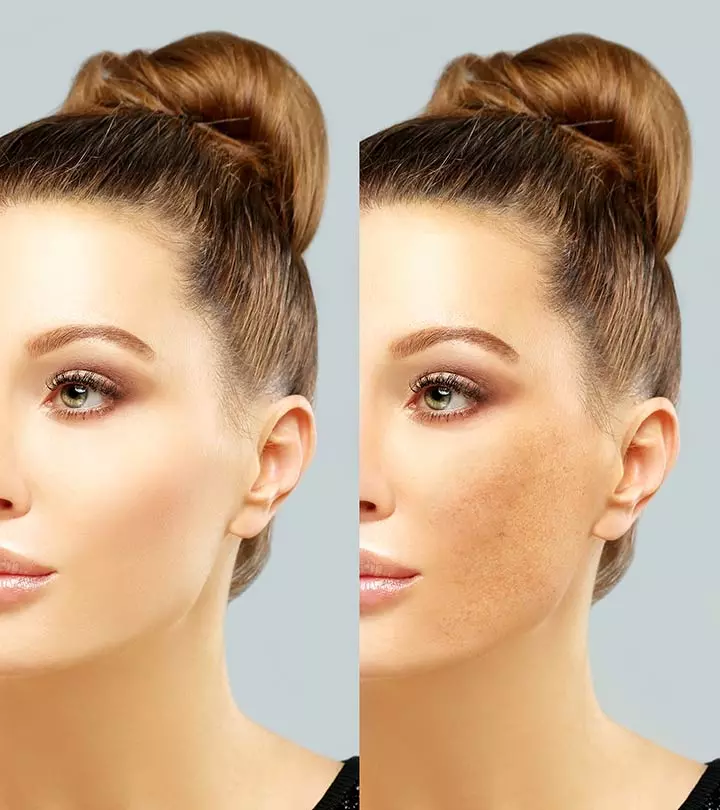

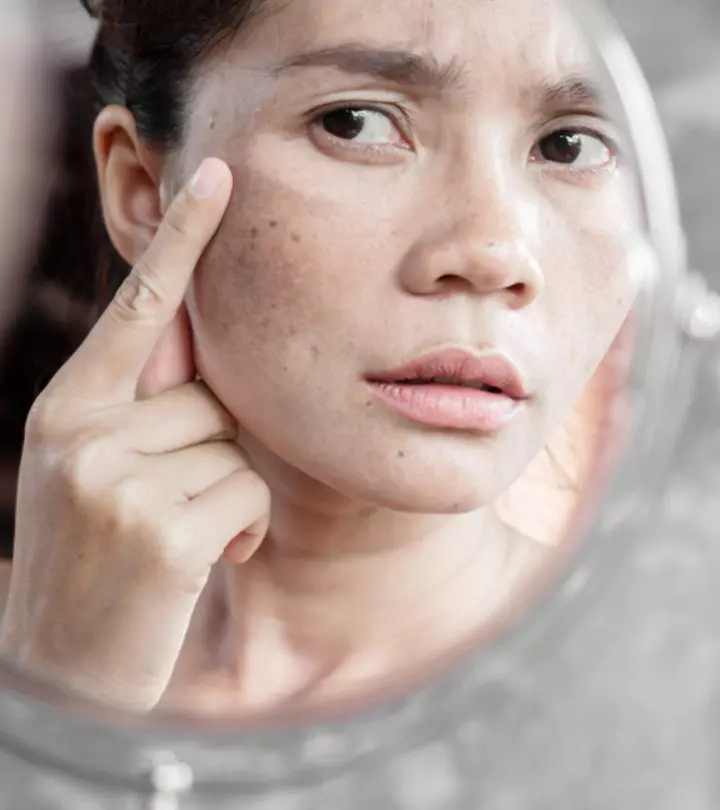



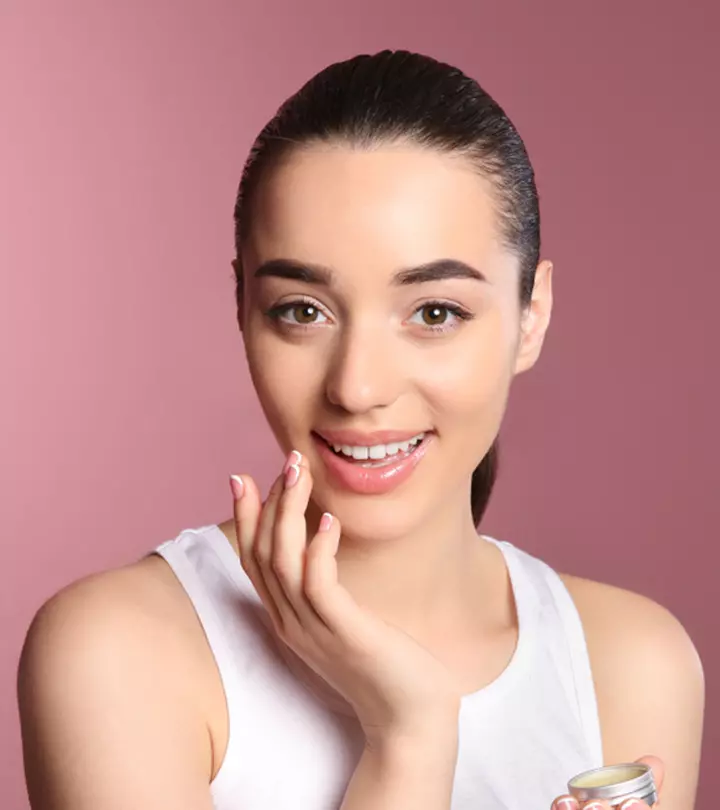
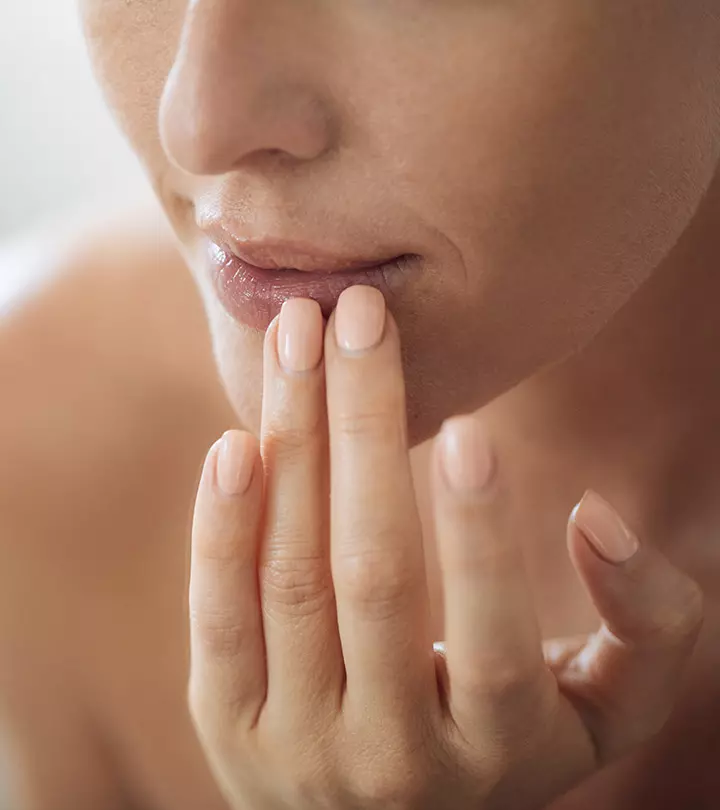
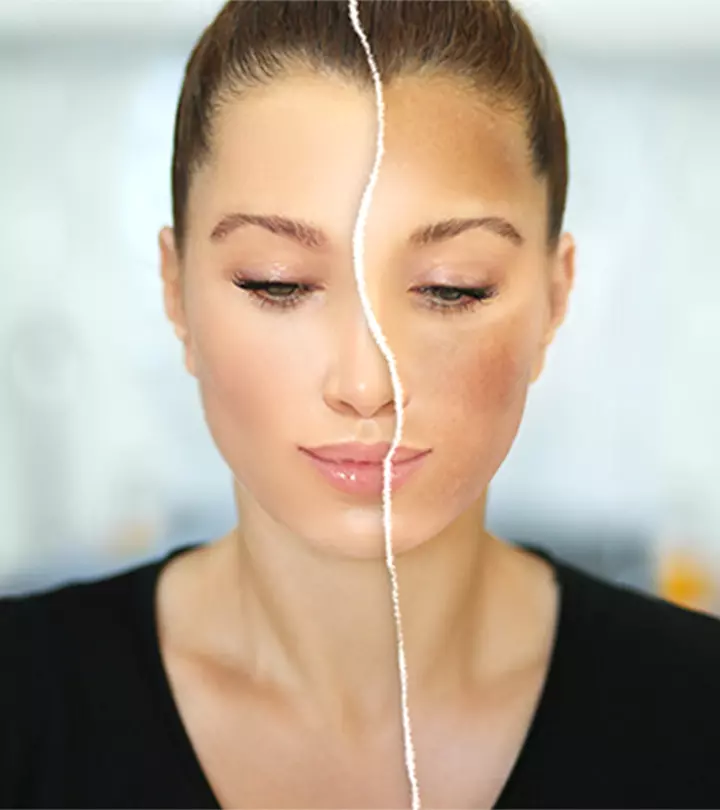


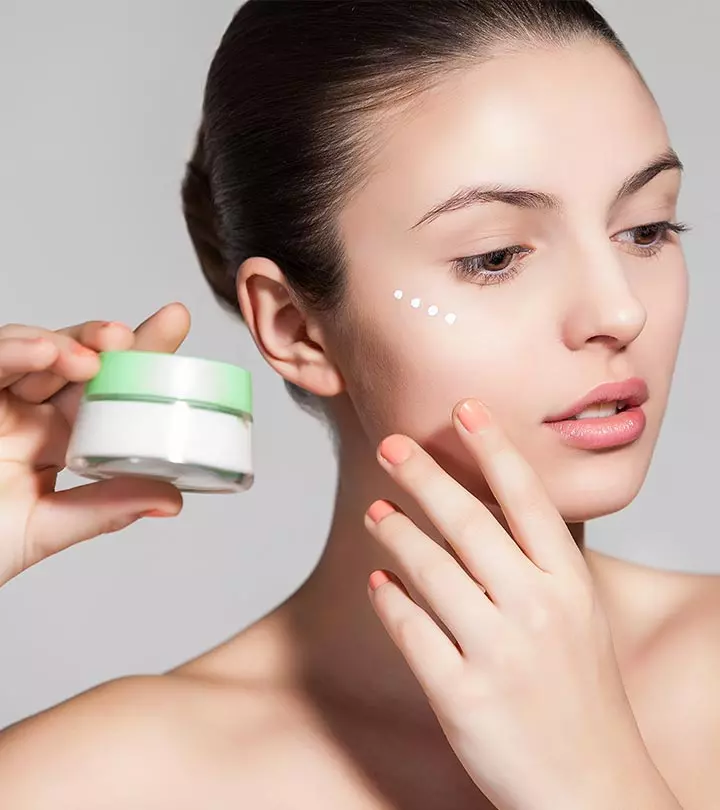
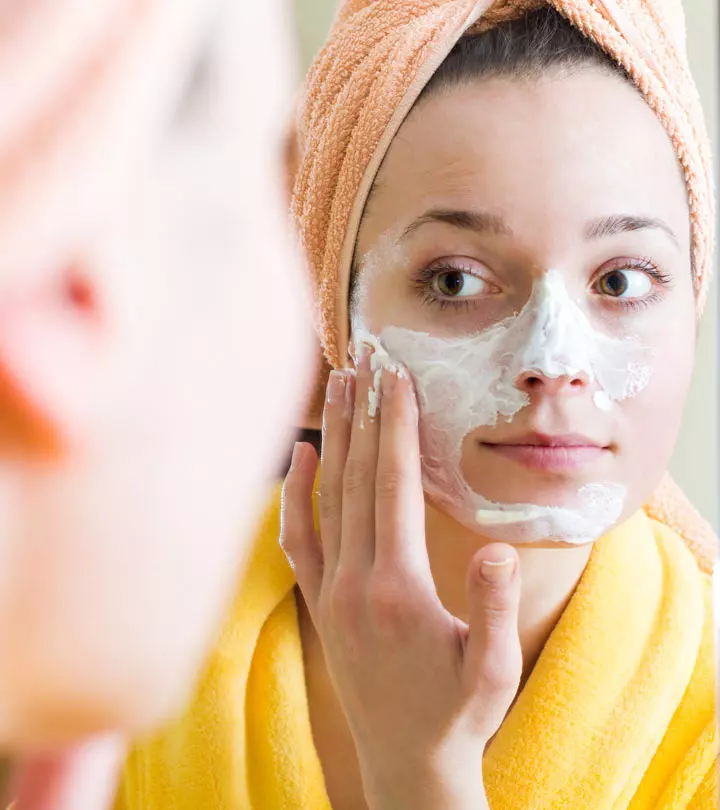

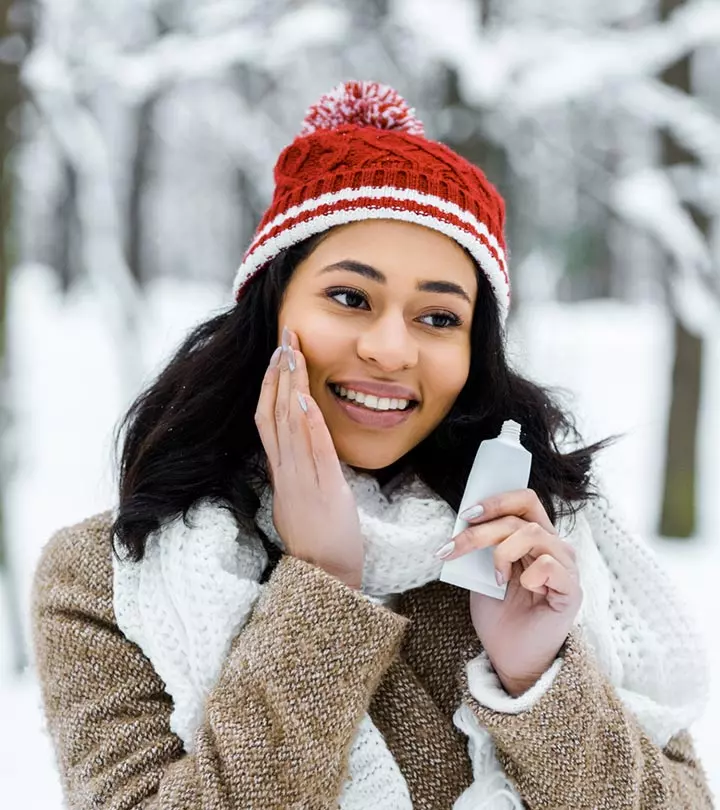


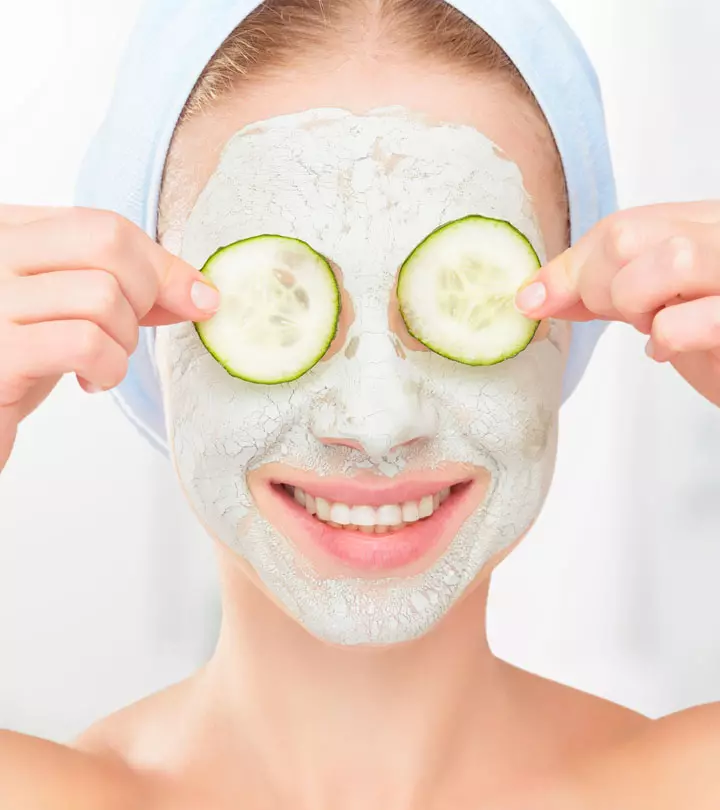
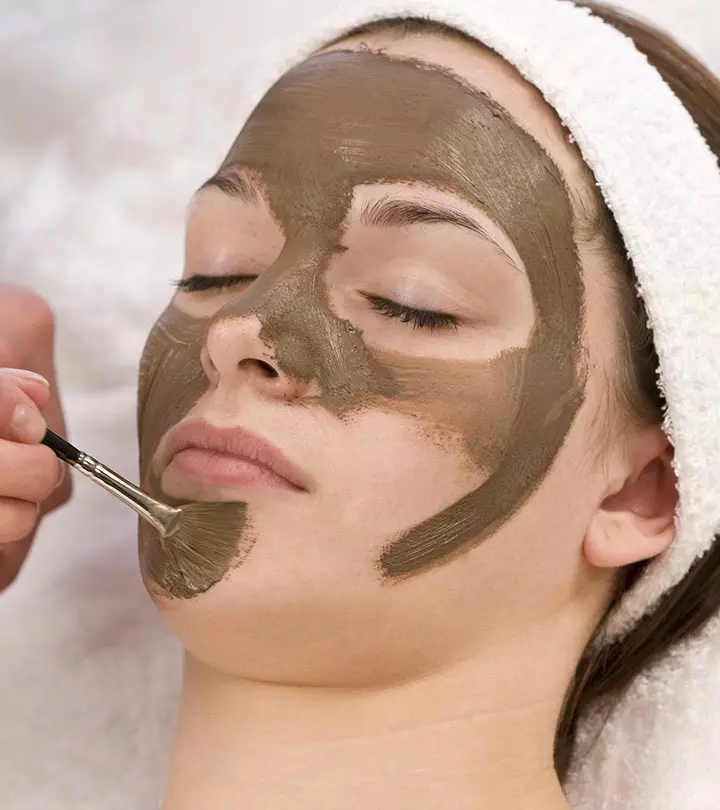

Community Experiences
Join the conversation and become a part of our empowering community! Share your stories, experiences, and insights to connect with other beauty, lifestyle, and health enthusiasts.